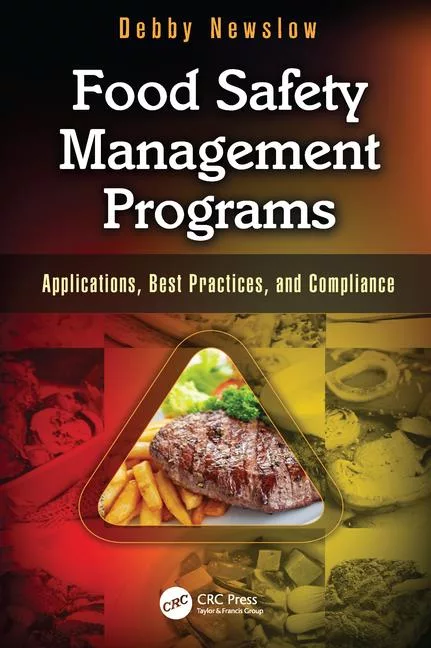FDA’s Changing Culture: What Every Food Company Needs to Know
The U.S. Food and Drug Administration (FDA) is undergoing a major culture change, and nowhere is that impact being felt more than in the food industry. While visibly preparing new regulations to implement the Food Safety Modernization Act (FSMA), the agency is quietly becoming much more inspection-oriented and enforcement-minded, even before FSMA is fully implemented. This trend will only continue as FDA completes FSMA rulemaking and begins enforcing the act.
This cultural change means that the practices that made food companies successful in the past may not be enough to make them successful today. Companies must be fully prepared for today’s FDA inspections or expect to face enforcement consequences. This article outlines FDA’s recent increased emphasis on inspections and enforcement, and discusses the steps food companies can take to get ready.
Inspections
FDA is conducting more domestic inspections than in recent years, completing more than 19,000 domestic facility inspections in 2011[1] (compared with approximately one-half that number 10 years ago), often in partnership with its counterpart state agencies. FDA has also become more strategic in selecting inspection sites by targeting companies whose products are considered “high risk,” targeting particular industry segments after an outbreak of foodborne illness, and sometimes targeting particular companies by inspecting multiple sites from the same company within a short interval of time. While inspections are still based on risk, FDA’s definition of “high risk” has expanded so much that it covers nearly one-third of the food industry, as opposed to approximately 10 percent of the industry 10 years ago. This expansion in the high-risk category is due in large part to the inclusion of products or ingredients that have been the subject of foodborne illness outbreaks, of which there have been a significant number in recent years.
The demeanor of FDA personnel during inspections has changed as well. Inspectors (or “investigators” as FDA refers to them) are much more assertive, often insisting on access to records before the new legal authority becomes effective and asserting their “right” to take photographs even without express legal authority. Inspections are also more comprehensive, and inspectors are “drilling down” deeper than ever before. This translates into more detailed inspectional observations (as listed on Form 483 presented at the conclusion of the inspections), and inspectors are more prone to list an observation on Form 483, even for minor issues that in the past would have been handled orally. Moreover, instead of simply collecting product samples for laboratory testing of finished product, inspectors are increasingly conducting extensive environmental testing throughout facilities. Environmental testing is more likely to detect a problem than finished product testing, making it an important tool for the agency during inspections. Such testing can be so extensive that some have dubbed this practice a “swab-a-thon.”
The impact of FDA’s culture change can be felt at the border and internationally as well. FDA has exercised increasing scrutiny over imports, especially ingredients, and has initiated more foreign on-site inspections. In 2012, FDA planned to conduct 1,200 foreign inspections, compared with less than 300 just 2 years prior—still a modest number but a quadrupling nonetheless.[2] FSMA provides for more frequent FDA inspections of both domestic and foreign facilities, meaning FDA’s focus on inspections will not only continue but intensify.
FDA’s increasing focus on inspections makes it more important than ever for companies to respond in writing within 15 business days to any Form 483 observations following an inspection. In particular, companies should take care to report to FDA all corrective actions taken (or a timetable for future corrective actions) and the company’s commitment to come into compliance. FDA reviews the company’s written response in determining agency follow-up actions, including whether to send a Warning Letter, so having a comprehensive written response—and submitting it in a timely way—is an absolute must. In fact, when FDA Commissioner Margaret Hamburg first took office, one of her very first pronouncements was the importance of speedy company responses to inspectional findings.[3]
Imports
Imported ingredients and products also face increased oversight as FDA makes heightened use of Import Alerts. This is an “old” legal authority that is being used more frequently, particularly with respect to seafood suppliers but to other importers as well. The statute has long set out a more lenient standard for FDA to detain imports than for seizure of domestic goods. Under Section 801(a) of the Federal Food, Drug and Cosmetic Act (FD&C Act), FDA need only determine that a finished food or ingredient “appears” to be adulterated or misbranded.[4] One visible example of FDA’s increased scrutiny of imports is the detention in January 2012 of shipments of orange juice from Brazil that contained traces of an unauthorized fungicide, carbendazim, even though FDA recognized its use did not present a risk to public health.[5] Importers of food products and ingredients can expect to see continued heightened oversight by FDA, including tests for pesticide and fungicide residues.
Enforcement
Warning Letters
More inspections inevitably means that more enforcement actions will follow, and this is exactly what has occurred. The number of Warning Letters issued by FDA based on food inspections has increased dramatically. Historically, FDA did not issue Warning Letters for violations of Good Manufacturing Practices (GMPs) for foods unless the agency found actual contamination of the food. In the past 2 years, however, FDA has started issuing Warning Letters for food adulteration based solely on insanitary conditions and GMP violations. In fact, in 2011, FDA issued nearly 100 such Warning Letters and continued this practice well into 2012. Most of the violations relate to basic sanitation, allergen control and employee adherence to GMPs, and were typically observed by FDA during a visual or walk-through inspection of the plant.
While FDA often relies primarily on a visual inspection, the advent of environmental testing gives FDA an additional tool to find food adulterated based on insanitary conditions. Actual contamination in food, typically discovered through testing of finished product samples, is involved in only a small percentage of cases where FDA issues a Warning Letter. Of the nearly 100 Warning Letters issued in 2011 involving adulteration based primarily on sanitation and GMP violations, only 6 percent involved actual contamination in the food. In addition, only 10 percent involved positive environmental testing, reflecting that inspectional observations were the primary basis for this surge in Warning Letters.
FDA’s Warning Letters related to insanitary conditions and GMP violations tended to focus on bakery and bread products, produce, cheese, confections (e.g., chocolates, candy, nuts, dried fruits) and soy products. The agency also directed its attention to enforcing the regulations for acidified foods, low-acid canned foods and its new program for the prevention of Salmonella in shell eggs. These areas of focus likely reflect FDA’s enforcement priorities as the agency begins FSMA implementation.[6]
In addition to those Warning Letters involving insanitary conditions and GMP violations, FDA issued more than 100 Warning Letters in 2011 pertaining to violations of the Hazard Analysis and Critical Control Points (HACCP) requirements for seafood and juice. FDA evaluated both the content and implementation of HACCP plans in great detail, paying particular attention to whether the plan listed all food safety hazards that are reasonably likely to occur; whether the critical limits identified were adequate to control the food safety hazard and whether any corrective actions adequately corrected the cause of the problem at issue. As FDA implements FSMA, we can expect to see more Warning Letters that conform to these same themes.
Beyond adulteration violations, FDA also continues to issue Warning Letters regarding misbranding of foods, issuing 139 such letters in the last 5 years. These Warning Letters typically focused on labeling violations, including ingredient labeling, allergen/sulfite labeling and nutrition labeling; nutrient content claims, particularly antioxidant and trans fat claims; and disease claims.[7]
Reinspection Fees
Companies that receive Warning Letters now face steep reinspection fees under FSMA. If FDA finds significant problems material to food safety during an inspection conducted after October 1, 2011, the follow-up inspection will be subject to reinspection fees. This is a provision of FSMA that has already become effective. Accordingly, if a company receives a Warning Letter following an FDA inspection, that company will be charged for the follow-up inspection. The fees are steep and include any follow-up laboratory testing and inspector preparation time, travel time and the time it takes to write a follow-up report. Fees for 2013 are $221 per hour for domestic inspections and $289 per hour for foreign inspections. Since FDA often sends in a team of inspectors who conduct extensive testing and stay on for several days, the cost of the inspection could easily total or even exceed $20,000.[8]
Actions for Injunction
Companies that fail reinspection become candidates for an injunction action, which FDA has increasingly relied upon as an enforcement tool against repeat offenders. The FD&C Act provides jurisdiction for federal district courts to hear injunction proceedings against companies introducing or delivering for introduction into interstate commerce any articles of food that are adulterated.[9] Food can be adulterated on the basis of actual contamination or if the food has been prepared, packed or held under insanitary conditions.[10] Virtually every action for injunction based on violations of food GMPs asserts that the food is adulterated because it was manufactured under insanitary conditions whereby it may have been rendered injurious to health.
Injunctions are an especially strong enforcement tool, as they require a company to close the affected facility until corrections are made and FDA reinspects to verify compliance (at the company’s expense) with applicable GMP and/or HACCP regulations (and, in the future, with applicable FSMA preventive controls regulations). This can take a considerable period of time and is extremely costly to the company. Moreover, even after being permitted to reopen the facility, the company remains under court supervision for the foreseeable future, making it easier for the agency to go back to court should similar problems recur.
From January 2011 through April 2012, FDA brought at least 12 injunction actions against food companies. The classic case involves an initial violative inspection (“Official Action Indicated”),[11] followed by a Warning Letter and then followed by a violative reinspection. FDA documented this particular pattern of violations in two-thirds of the cases in which the agency filed for injunctive relief. Typically, FDA will issue only one Warning Letter per facility before filing suit for injunction, considering the Warning Letter, combined with the violative inspections, to be sufficient to put the company on notice. Companies almost always receive a Warning Letter prior to FDA’s filing for injunctive relief, unless FDA feels there is a direct public health or safety threat (e.g., actual contamination). FDA has also brought cases in which the first reinspection does not reveal major violations, but backsliding is found in later reinspections, so a Warning Letter can be the basis of an injunction for several years after it is issued. Actual contamination of food is not a prerequisite to FDA’s filing suit, but it increases the likelihood of FDA action if it is found. FDA also looks to inspectional history from state inspections in building its injunction case.
Like Warning Letters, FDA’s food injunction cases focused on the same product categories the agency considers high risk: in particular, seafood, cheese, juice and unpasteurized milk.[12] FDA considers these four product categories to be high risk due to a history of foodborne illness outbreaks and Class I recalls in the past 5 years.
The use of injunction actions against food companies with a history of violations means a company’s response and corrective actions to address inspectional observations and Warning Letters become even more important. Although in context the likelihood of an FDA injunction is small (20,000 inspections lead to 200 Warning Letters, which lead to about 10 injunctions annually), the financial consequences of an injunction are so severe, it is important that all food companies take the necessary steps to avoid even getting close to this type of enforcement action.
Stronger Enforcement Powers under FSMA
In addition to the changes occurring within the agency, FDA has been given increased enforcement authorities under FSMA, including authorities for mandatory recalls and suspension of registration, and these authorities are now in effect. FDA has authority to mandate a food product recall if the company refuses to recall the product voluntarily and the hazard meets the criteria for a Class I recall. Further, FDA has authority to suspend a company’s registration, thereby revoking its license to ship products, when the food presents a reasonable probability of causing serious adverse health consequences or death (the same standard for a Class I recall).
FDA has just recently invoked this new suspension authority for the first time. Following an outbreak of Salmonella in peanut butter in October 2012, FDA suspended the registration of a producer of nuts and nut and seed spreads. FDA determined that the company met the standard for suspension because of positive Salmonella finished product and environmental testing results, as well as insanitary conditions in the facility. This action effectively shut down the facility, because a facility is prohibited from introducing food into commerce, or importing or exporting food, when its registration is suspended.
FSMA also broadened the standard for administrative detention of food to cover cases where the agency “has reason to believe” the food is “adulterated or misbranded” (rather than where there is “credible evidence” that the food presents a “threat of serious adverse health consequences or death,” as was the standard under the Bioterrorism Act of 2002). Administrative detention is an interim authority that can be used to detain food for a short time while the agency initiates official action in federal court to seize the product in question.[13] Prior to FSMA, FDA would utilize state embargo authority for this same
purpose.
Park Doctrine and Criminal Liability
FDA has also resurrected usage of the Park doctrine in the drug area and has foreshadowed the agency’s intent to apply it in the food area as well. The Park doctrine is based on a 1975 U.S. Supreme Court case affirming FDA’s right to bring a criminal misdemeanor case against corporate executives based on a strict liability theory.[14] Under Park, a corporate official can be held criminally liable for violations of the FD&C Act in areas of the company under the official’s control, even if the official did not intend for the violations to occur. Individuals committing prohibited acts under the FD&C Act are subject to a maximum criminal penalty of 1 year’s imprisonment and/or a fine of $100,000 if the violation does not result in death, or $250,000 if death results. The penalties are steeper for organizations, with maximum penalties of $200,000 if the offense does not result in death and $500,000 if it does. If the violation is committed with intent to defraud or mislead, or occurs after a prior conviction, it is subject to up to 3 years’ imprisonment, a fine of $250,000 or both. For an organization, the maximum fine in this situation is $500,000.
The Park doctrine is not a new FSMA authority, but after years of dormancy, FDA has indicated renewed interest in using the doctrine as part of its enforcement regime. In a letter to Senator Charles Grassley dated March 4, 2010, Commissioner Hamburg explained that an internal FDA review committee recommended “increas[ing] the appropriate use of misdemeanor prosecutions, a valuable enforcement tool, to hold responsible corporate officials accountable.” In response to this recommendation, she reported, the agency updated its Regulatory Procedures Manual, an internal policy guide for FDA field personnel, to include Park prosecutions among FDA’s enforcement tools.[15] Since then, FDA’s Deputy Chief Counsel for Litigation Eric Blumberg has indicated in public speeches that the agency views misdemeanor prosecutions under Park as providing important deterrent effects and accountability for corporate officials.[16] Prior warning of the violations (via Warning Letter) is generally provided before an action is initiated.[17] While FDA has yet not initiated Park doctrine actions in the food sphere, there have been cases involving other FDA-regulated products.
Implications for Food Companies
Thus, FDA has demonstrated increased or renewed interest in using a number of its enforcement tools, including inspections, Import Alerts, Warning Letters, actions for injunction and criminal liability under the Park doctrine. FSMA requires FDA to conduct more frequent inspections and gives it authorities for mandatory recalls and suspension of registration. Clearly, companies must recognize and adjust to FDA’s changing culture.
The current shift is the most significant since the early 1990s. Companies will need to adapt to FDA’s increasingly inspection- and enforcement-minded culture, as what satisfied the agency even a few years ago may not meet expectations today.
What Food Companies Should Do Now to Prepare
As the saying goes, “forewarned is forearmed.” Companies should take steps now—before FSMA is fully implemented—to adapt to these agency changes and prepare for inspections, both now and in the future. In particular, companies should:
• Involve the entire organization: Engage all relevant parts of the organization that need to be involved in regulatory compliance, including regulatory, food safety/quality, legal, operations, procurement and supply chain oversight. Companies may want to consider forming a Steering Committee to oversee inspectional issues and to prepare for FSMA implementation, with each department of the organization represented.
• Go back to basics: Critically evaluate manufacturing facilities to be sure you have strong foundational elements of food safety in place: sanitation, allergen control and GMP compliance. These are the areas FDA inspectors are focusing on today. Look particularly at any recurring problems in your facility and be sure you are getting at the root cause and not just treating the symptoms. Companies may want to consider using third-party auditors for “fresh eyes.”
• Look ahead to FSMA: Now is the time to assess your “FSMA readiness.” Evaluate whether you have the key elements in place for preventive controls, supplier verification and food defense plans. Having a robust environmental monitoring program will become increasingly important. These elements will become the cornerstones of FSMA compliance. FDA has stated clearly that it expects to see progress toward FSMA implementation during inspections even before the final regulations are issued, so get ready now.
• Keep good records: FSMA gives FDA much broader access to manufacturing-related records during inspections. Companies should adopt good record-keeping practices now—in preparation for those inspections. Be sure your records are complete, well organized and accessible. Corrective actions, in particular, must be well documented. You will need good records to show FDA that when problems occurred, you acted responsibly. Remember: “If it isn’t documented, it didn’t happen.”
• Train, train, train: Conduct refresher training both on your food safety practices and on how to manage an FDA inspection, including updating inspection manuals. It is important to reinforce key themes and the importance of complying with GMPs on a daily basis. As FDA implements FSMA, training will continue to be important to ensure that plant managers and personnel understand the new expectations under the act.
• Prepare for FDA inspections: Know your rights and responsibilities during an FDA inspection and be prepared to address key issues. Be sure you have clear company policies regarding records access, taking of photographs and requests to sign affidavits, and that your frontline personnel are fully knowledgeable on them.
• Nurture your FDA relationship: Recognize and build a positive relationship with your local FDA district office and any inspectors who visit your facility. Demonstrate a commitment to respond to any questions and to comply fully with applicable laws and regulations. When FDA does raise concerns during an inspection, take prompt corrective actions and communicate those clearly and in writing to your district office. Show them you care!
• Stay vigilant: Even companies with strong compliance programs sometimes run into problems. FDA understands this occurs. What matters most is that you recognize a new problem quickly, and that you act forthrightly to correct it and prevent any recurrence. The ability to respond effectively to unexpected problems is a key element of a strong food safety program.
These steps will help you prepare for the FDA inspections of today and of the foreseeable future. As seen through FDA’s recent actions toward increased inspections, Import Alerts, Warning Letters, actions for injunction and an increased interest in Park prosecutions, FDA is becoming more inspection- and enforcement-minded than even in the recent past. Moreover, FSMA provides for increased FDA inspections and oversight. As FDA implements FSMA, these trends will continue, making it critical that companies begin now to prepare for inspections and adjust to FDA’s changed expectations.


References
1. www.fda.gov/Food/FoodSafety/FSMA/ucm315486.htm.
2. FDA has said that foreign inspections will continue at the 1,200-per-year level until resources increase further.
3. www.fda.gov/NewsEvents/Speeches/ucm175983.htm.
4. 21 U.S.C. Section 381(a).
5. 21 U.S.C. Section 342(a)(2) [“A food shall be deemed adulterated if it bears or contains a pesticide chemical residue that is unsafe within the meaning of section 408(a)”].
6. See 21 U.S.C. Section 350j (requiring high-risk facilities to be subject to more frequent inspections than non-high-risk facilities) and www.fda.gov/Food/FoodSafety/FSMA/ucm295345.htm.
7. Companies receiving Warning Letters for misbranded products are increasingly subject to private class-action lawsuits alleging consumer deception under state consumer protection laws.
8. www.fda.gov/Food/FoodSafety/FSMA/ucm315486.htm.
9. 21 U.S.C. Sections 331(a), 332(a); 342(a).
10. The FD&C Act deems a food to be adulterated in several situations, including: “(1) if it bears or contains any poisonous or deleterious substance which may render it injurious to health; … (3) if it consists in whole or in part of any filthy, putrid, or decomposed substance, or if it is otherwise unfit for food; or (4) if it has been prepared, packed, or held under insanitary conditions whereby it may have become contaminated with filth, or whereby it may have been rendered injurious to health.” 21 U.S.C. Section 342(a).
11. After examining the findings of an inspection, FDA classifies the inspection as one of three “decision types”: (1) No Action Indicated in cases where no objectionable conditions or practices were found during the inspection; (2) Voluntary Action Indicated in cases where objectionable conditions were found but do not meet the threshold for regulatory action or (3) Official Action Indicated, where objectionable conditions were found and a specified regulatory action should be recommended.
12. www.fda.gov/Food/FoodSafety/FSMA/ucm295345.htm.
13. 21 U.S.C. Section 334.
14. United States v. Park, 421 U.S. 658 (1975).
15. grassley.senate.gov/about/upload/FDA-3-4-10-Hamburg-letter-to-Grassley-re-GAO-report-on-OCI.pdf.
16. www.bloomberg.com/news/2010-10-14/drugmaker-executives-may-become-targets-of-fda-for-off-label-promotions.html and www.fdli.org/conf/highlights/enforcement2010.html.
17. In fact, FDA always addresses any Warning Letter to the CEO of the company to focus accountability at the company’s most senior level.
Looking for quick answers on food safety topics?
Try Ask FSM, our new smart AI search tool.
Ask FSM →








